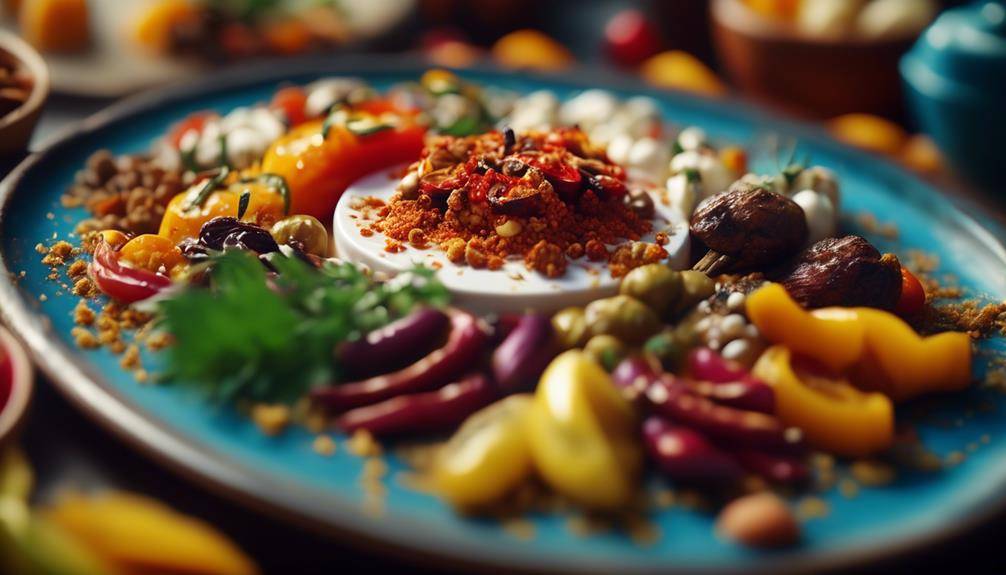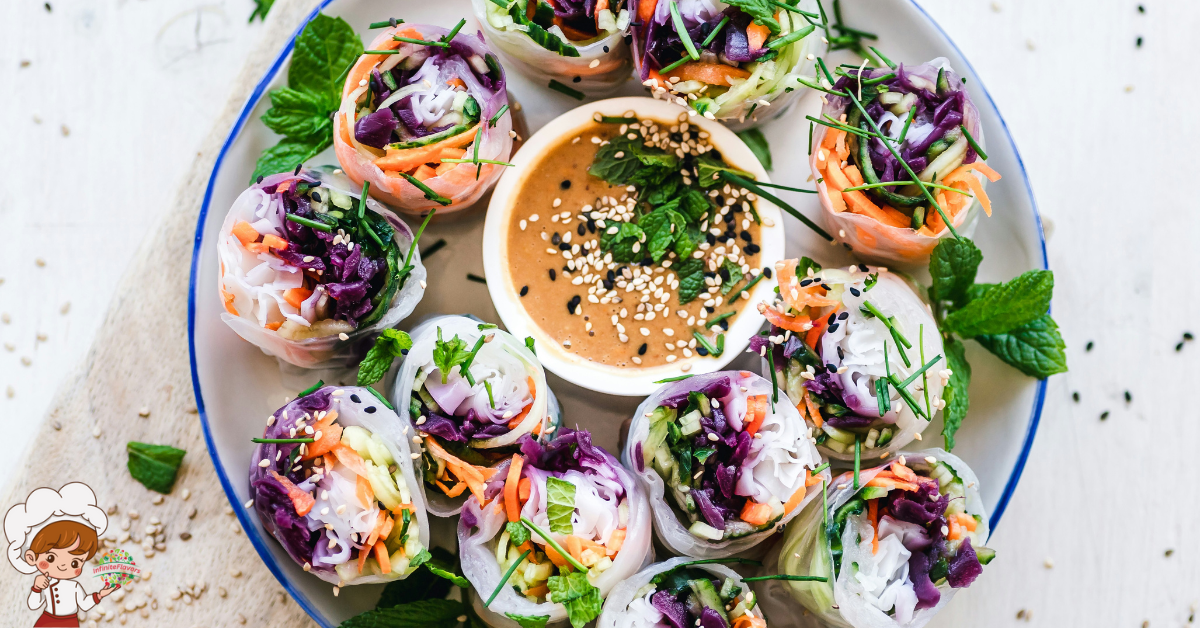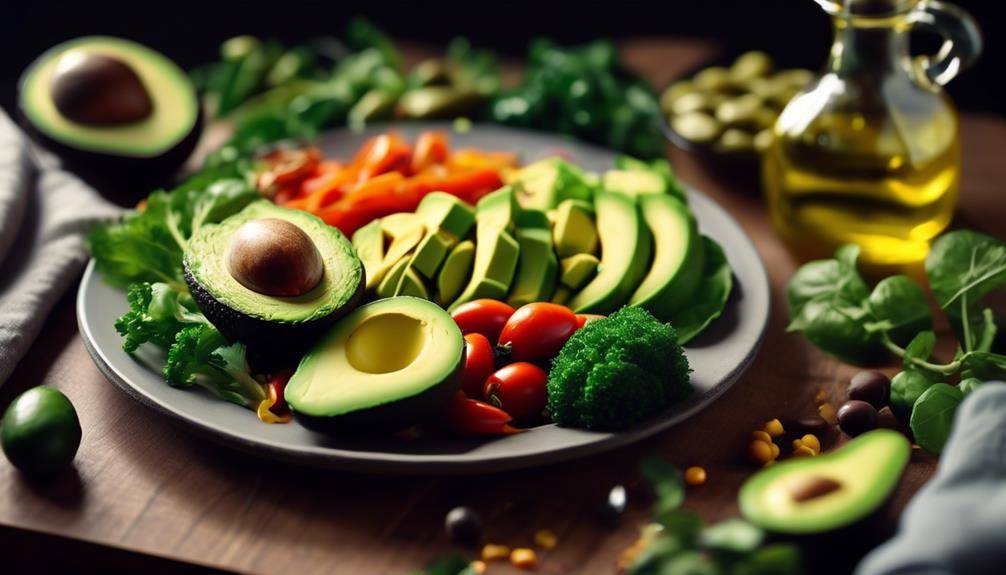Amazing Greek Fusion Cuisine And Influences

Amazing Greek Fusion Cuisine And Influences; Step into a world where culinary boundaries are blurred and flavors collide like a symphony of taste. Greek fusion cuisine takes you on a journey of international influences, where traditional Greek dishes are transformed into tantalizing creations that will leave your taste buds craving for more. From the vibrant and spicy flavors of Greek-Mexican fusion to the delicate and refined techniques of Greek-Japanese fusion, each combination promises a unique and unforgettable dining experience. So, prepare to embark on a culinary adventure that will transport you to new gastronomic heights, where the fusion of cultures and cuisines creates a tapestry of flavors that is simply irresistible.
Greek-Mexican Fusion: The Best of Both Worlds
If you’re a fan of both Greek and Mexican cuisine, get ready to experience the ultimate culinary fusion with Greek-Mexican Fusion: The Best of Both Worlds. This unique blend of flavors combines the vibrant and bold spices of Mexican cuisine with the fresh and wholesome ingredients of Greek cooking, creating a truly tantalizing and mouthwatering experience.
Greek-Mexican fusion is the ultimate culinary mashup that takes the best elements from both cuisines and combines them in innovative and exciting ways. It’s a celebration of diversity and cultural exchange, where traditional Greek dishes meet the vibrant and fiery flavors of Mexico. The result is a fusion of flavors that is both familiar and unexpected, creating a truly unique dining experience.
One of the key aspects of Greek-Mexican fusion is the use of spices and herbs. Greek cuisine is known for its use of aromatic herbs like oregano, thyme, and rosemary, while Mexican cuisine is famous for its bold and spicy flavors. By combining these two culinary traditions, chefs are able to create dishes that are both rich in flavor and complexity.
Another important element of Greek-Mexican fusion is the use of fresh and seasonal ingredients. Greek cuisine is characterized by its emphasis on fresh produce, such as tomatoes, cucumbers, and olives, while Mexican cuisine is known for its use of avocados, chilies, and corn. By using these ingredients in creative ways, chefs are able to create dishes that are both delicious and visually stunning.
Exploring Greek-Asian Flavors and Techniques
Greek-Asian fusion cuisine combines the distinct flavors and culinary techniques of Greek and Asian cooking traditions, resulting in an innovative and exciting dining experience. When it comes to Greek-Asian fusion, there are two prominent subcategories: Greek Thai fusion and Greek Chinese fusion.
Greek Thai fusion takes the bold and vibrant flavors of Thai cuisine and infuses them with the fresh and wholesome ingredients of Greek cuisine. This fusion creates unique flavor combinations that are both surprising and delightful. Imagine a dish where the tanginess of Thai lime and the creaminess of Greek yogurt come together to create a refreshing and zesty sauce for grilled seafood or roasted vegetables. The combination of Thai spices like lemongrass, ginger, and chili peppers with Greek staples like feta cheese and olive oil brings a new level of complexity and depth to traditional Greek dishes.
On the other hand, Greek Chinese fusion focuses on combining traditional Chinese cooking techniques with a Greek twist. This fusion showcases the versatility of Greek ingredients and the precision of Chinese culinary methods. Picture a dish where the tenderness of Greek lamb is enhanced by a Chinese-style stir-fry with soy sauce, garlic, and ginger. The result is a harmonious blend of flavors that will leave your taste buds craving for more. The use of Greek herbs and spices, such as oregano and cinnamon, in Chinese stir-fries or dumplings adds a unique and unexpected twist to familiar Chinese dishes.
Exploring Greek-Asian flavors and techniques opens up a world of possibilities for culinary innovation. Whether it is the fusion of Greek and Thai cuisine or the marriage of Greek ingredients with Chinese cooking methods, Greek-Asian fusion cuisine offers a diverse and exciting dining experience that is sure to delight food lovers everywhere.
Mediterranean Meets Middle East: Greek-Arab Fusion
When it comes to Greek-Arab fusion cuisine, the cultural culinary exchange between the Mediterranean and the Middle East brings together a tantalizing array of flavors. The richness of Greek ingredients such as olive oil, feta cheese, and fresh herbs perfectly complement the aromatic spices and ingredients used in Arab cooking. This fusion creates a unique and harmonious blend of flavors that showcases the best of both culinary traditions.
Cultural Culinary Exchange
The culinary fusion between Greece and the Arab world brings together a harmonious blend of Mediterranean and Middle Eastern flavors, creating a unique and vibrant dining experience. This cultural exchange is a testament to the global food trends that have shaped the culinary landscape. The Mediterranean and Middle Eastern regions have a long history of cultural interaction, and this is reflected in their culinary traditions. Greek-Arab fusion cuisine combines the fresh ingredients and simplicity of Mediterranean cuisine with the bold spices and flavors of the Middle East.
Dishes such as moussaka with a Middle Eastern twist, combining lamb and eggplant with spices like cumin and coriander, showcase the seamless integration of these two culinary traditions. This fusion not only highlights the similarities between the two cultures but also celebrates their differences, resulting in a truly extraordinary dining experience.
Flavors of the Mediterranean
Drawing on the rich traditions of both Mediterranean and Middle Eastern cuisine, the flavors of the Greek-Arab fusion create a tantalizing culinary experience that seamlessly blends fresh ingredients with bold spices and aromatic herbs. This Mediterranean fusion is a result of the evolving nature of Greek cuisine, influenced by the historical connections and cultural exchanges with the Arab world.
Greek cuisine has evolved over centuries, incorporating various elements from different cultures, including the Middle East. The Arab influence on Greek cuisine can be seen in the abundant use of spices like cumin, coriander, and cinnamon, which add depth and complexity to dishes. The use of ingredients like tahini, dates, and pistachios also reflects the Middle Eastern influence on Greek cuisine.
The Greek-Arab fusion not only combines flavors but also techniques. The art of grilling and roasting, commonly used in both Mediterranean and Middle Eastern cuisines, is a prominent feature in Greek-Arab fusion dishes. This cooking method enhances the natural flavors of the ingredients and creates a harmonious blend of tastes.
Greek-Italian Fusion: A Match Made in Food Heaven
When it comes to Greek-Italian fusion cuisine, you can expect a flavorful Mediterranean combination that creates a harmonious culinary marriage. The rich flavors of Greek ingredients, such as olive oil, feta cheese, and fresh herbs, perfectly complement the traditional Italian flavors of tomatoes, pasta, and Parmesan cheese. The result is a fusion of flavors that is both familiar and exciting, a match made in food heaven.
Flavorful Mediterranean Combination
Combining the rich flavors of Greece with the vibrant culinary traditions of Italy, Greek-Italian fusion cuisine offers a tantalizing blend of Mediterranean goodness that will transport your taste buds to food heaven. This flavorful Mediterranean combination brings together the best of both worlds, creating a unique and mouthwatering dining experience. The fusion of Mediterranean and Indian flavors adds a spicy twist to traditional Greek and Italian dishes, infusing them with aromatic spices and herbs.
Imagine enjoying a Greek moussaka infused with Indian curry spices or a classic Italian pasta dish with a touch of Caribbean flair. The result is a fusion of flavors that harmoniously complement each other, creating a truly unforgettable culinary experience. Whether you’re craving the bold and tangy flavors of Greece or the hearty and comforting dishes of Italy, Greek-Italian fusion cuisine has something to satisfy every palate.
Harmonious Culinary Marriage
The marriage of Greek and Italian flavors in fusion cuisine is a divine combination that takes your taste buds on a journey through the vibrant and harmonious world of Mediterranean gastronomy. This cross-cultural culinary exchange brings together the best of both culinary traditions, blending traditional techniques and ingredients to create innovative and mouthwatering dishes.
Greek cuisine is known for its use of fresh ingredients, bold flavors, and simple yet elegant cooking methods. Italian cuisine, on the other hand, is renowned for its rich sauces, creamy cheeses, and delicate pasta dishes. When these two culinary worlds collide, the result is a harmonious blend of flavors that is truly exceptional.
In Greek-Italian fusion cuisine, you can expect to find dishes like spanakopita lasagna, combining the flaky pastry of traditional Greek spanakopita with the comforting layers of Italian lasagna. Or how about a Greek-inspired pizza topped with feta cheese, olives, and fresh herbs? These innovative creations showcase the endless possibilities that arise when two culinary traditions come together in perfect harmony.
Through the blending of traditional techniques, Greek-Italian fusion cuisine not only offers a delightful culinary experience but also pays homage to the rich history and cultural exchange that exists between these two Mediterranean countries. So, whether you’re craving a moussaka pizza or a baklava tiramisu, indulge in the harmonious marriage of Greek and Italian flavors and let your taste buds embark on a delicious journey through the best of both worlds.
Greek-American Influences: From Gyros to Burgers
Greek-American cuisine showcases a delightful fusion of traditional Greek flavors and American culinary influences, resulting in a diverse range of dishes that go beyond the iconic gyro to include mouthwatering burgers. This unique blend of cultures has given rise to a vibrant and exciting food scene that tantalizes the taste buds and captures the imagination of food lovers everywhere.
- The Greek-American fusion dishes created by blending the rich Greek culinary heritage with the bold flavors of American cuisine evoke a sense of nostalgia and comfort. The combination of familiar ingredients like feta cheese, olives, and olive oil with American favorites like bacon, barbecue sauce, and melted cheese creates a harmonious marriage of flavors that is both satisfying and indulgent.
- Greek-Indian culinary influences have also made their mark on Greek-American cuisine, adding a spicy and aromatic twist to traditional Greek dishes. The use of spices like cumin, coriander, and turmeric in dishes like Greek-style curries and spiced lamb burgers creates a tantalizing fusion of flavors that is both unexpected and delicious.
- The introduction of Greek-inspired burgers has been a game-changer in the Greek-American food scene. These burgers, made with ground lamb or beef and topped with Mediterranean-inspired ingredients like tzatziki sauce, feta cheese, and roasted red peppers, offer a fresh and flavorful alternative to traditional American burgers. The combination of juicy meat, tangy sauces, and vibrant toppings creates a culinary experience that is both familiar and exciting.
Greek-French Fusion: A Delicate Balance of Flavors
With a culinary finesse that delicately balances the flavors of Greece and France, the Greek-French fusion cuisine offers a tantalizing experience for food enthusiasts seeking a harmonious blend of Mediterranean and French gastronomy. This unique culinary style combines the rich, bold flavors of Greek cuisine with the refined techniques of French cooking, resulting in a delightful fusion that showcases the best of both worlds.
Greek-French fusion cuisine is characterized by its delicate flavors, which are carefully crafted to bring out the essence of each ingredient. The fusion techniques used in this cuisine allow for a seamless integration of Greek and French ingredients, creating a harmonious balance that elevates the taste of the dishes. For example, Greek herbs like oregano and thyme are combined with French herbs like tarragon and parsley to add depth and complexity to dishes. The use of citrus fruits, such as lemon and orange, in both cuisines further enhances the fusion, adding a refreshing and tangy twist to traditional Greek and French dishes.
One of the hallmarks of Greek-French fusion cuisine is the incorporation of Greek ingredients into classic French dishes. For instance, traditional French dishes like coq au vin are given a Greek twist by replacing the red wine with Greek red wine, and adding Greek olives and feta cheese to the dish. This infusion of Greek flavors adds a new dimension to the dish, creating a unique and memorable eating experience.
In addition to the fusion of ingredients, Greek-French fusion cuisine also incorporates fusion techniques, such as the use of Greek and French cooking methods. For example, Greek grilling techniques are combined with French sautéing and braising techniques to create dishes that are both flavorful and tender. This combination of techniques allows for a wide range of textures and flavors in Greek-French fusion cuisine, making it a truly versatile and exciting culinary experience.
Greek-Indian Fusion: Spices and Herbs Unite
To create an enticing fusion of Greek and Indian cuisine, the aromatic spices and fragrant herbs of both culinary traditions unite, resulting in a captivating blend of flavors. The combination of these two rich and diverse culinary cultures creates a unique and exciting dining experience. Here are three examples of how spices and ingredients play a crucial role in this cultural fusion:
- Cardamom: This warm and aromatic spice is commonly used in both Greek and Indian cuisines. In Greek cuisine, it adds a subtle and sweet flavor to dishes like galaktoboureko, a traditional Greek dessert. In Indian cuisine, it is a key ingredient in masala chai and adds a complex and fragrant note to curries and biryanis. When combined, the use of cardamom in Greek-Indian fusion dishes creates a harmonious balance of flavors, enhancing both the sweet and savory elements.
- Cumin: Cumin is an essential spice in Indian cuisine, known for its earthy and nutty flavor profile. In Greek cuisine, it is less commonly used but can be found in dishes like souvlaki marinades. When incorporated into Greek-Indian fusion dishes, cumin adds depth and complexity, creating a truly unique taste experience.
- Turmeric: Known for its vibrant golden color, turmeric is a staple in Indian cuisine. It is widely used in Greek cuisine as well, particularly in dishes like tzatziki. Its earthy and slightly bitter taste adds depth and warmth to both cuisines. When combined in Greek-Indian fusion dishes, turmeric not only enhances the visual appeal but also adds a distinctive flavor that perfectly complements both culinary traditions.
The fusion of Greek and Indian cuisines showcases the versatility and creativity of blending different spices and ingredients. The result is a tantalizing fusion that celebrates the best of both culinary worlds, offering a truly captivating and unforgettable dining experience.
Greek-Turkish Fusion: a Culinary Journey Across Borders
As you embark on a culinary journey across borders, the fusion of Greek and Turkish cuisines takes center stage. This cross-cultural exchange brings together the distinct flavors of both countries, harmonizing them in a unique and exciting way. Traditional techniques from each cuisine are blended seamlessly, resulting in a culinary experience that is both familiar and innovative.
Cross-Cultural Culinary Exchange
Through the melding of Greek and Turkish culinary traditions, a captivating culinary journey unfolds, showcasing the vibrant flavors and rich history of this cross-cultural exchange. The cross-cultural culinary exchange between Greece and Turkey has resulted in a fusion of food trends that have taken the culinary world by storm. Here are three reasons why this fusion has evoked such an emotional response in the audience:
- Exquisite Flavor Combinations: The combination of Greek and Turkish ingredients creates a harmonious blend of flavors that tantalize the taste buds. The use of Mediterranean herbs like oregano and thyme, along with spices like cumin and sumac, adds depth and complexity to the dishes.
- Cultural Connection: The fusion of Greek and Turkish cuisines represents a shared history and cultural connection between these two neighboring countries. It serves as a reminder of the centuries-old exchanges and influences that have shaped their culinary traditions.
- Culinary Innovation: The cross-cultural exchange has sparked culinary innovation, pushing chefs to experiment with new techniques and ingredients. This fusion has given birth to unique dishes that embrace the best of both worlds, creating a dining experience that is both familiar and exciting.
The Greek-Turkish fusion showcases the beauty of cross-cultural culinary exchange and highlights the endless possibilities when different traditions come together in the kitchen.
Harmonizing Greek and Turkish Flavors
The harmonization of Greek and Turkish flavors in the realm of culinary fusion takes diners on a captivating journey across borders, where the vibrant tastes of both cultures intertwine in a symphony of gastronomic delight. Exploring Greek-Turkish fusion allows chefs to create unique flavor combinations that showcase the best of both cuisines. Greek cuisine is known for its use of fresh ingredients like olive oil, lemon, and herbs, while Turkish cuisine is renowned for its rich spices and savory dishes.
By merging these culinary traditions, dishes like Greek-style kebabs with tzatziki sauce or Turkish-inspired moussaka with a hint of cinnamon can be created. These flavor combinations offer a new perspective, adding depth and complexity to traditional Greek and Turkish dishes. The result is a fusion of flavors that satisfies the palate and celebrates the shared culinary heritage of Greece and Turkey.
Blending Traditional Techniques
Blending traditional techniques from Greece and Turkey creates a culinary journey that transcends borders, offering a harmonious fusion of flavors and cooking styles. In the realm of Greek-Turkish fusion cuisine, chefs are constantly reinventing Greek cuisine by incorporating innovative techniques and creative flavor combinations. This culinary evolution not only preserves the culinary heritage of both countries but also pushes the boundaries of traditional cooking. Here are three examples of how blending traditional and modern techniques has resulted in exciting and delicious Greek-Turkish fusion dishes:
- Grilled octopus with Turkish spices: By marinating the tender octopus in a blend of Turkish spices and grilling it to perfection, the dish combines the smoky flavors of Greek grilling with the aromatic spices of Turkish cuisine.
- Baklava with pistachios and rosewater: This traditional Greek dessert takes on a modern twist with the addition of Turkish ingredients. The use of pistachios and rosewater adds a unique flavor profile to the sweet layers of phyllo pastry, reinventing a classic treat.
- Lamb moussaka with Turkish eggplant: Moussaka is a beloved Greek dish, but by using Turkish eggplants instead of the traditional Greek variety, the dish takes on a slightly different texture and flavor. This fusion experimentation creates a new and exciting version of a traditional Greek favorite.
Blending traditional techniques and experimenting with new flavors and cooking styles allows Greek-Turkish fusion cuisine to evolve and offer a fresh perspective on the rich culinary heritage of both countries.
Greek-Peruvian Fusion: Ancient and Modern Flavors Collide
With a delightful blend of ancient Greek and modern Peruvian flavors, Greek-Peruvian fusion cuisine tantalizes the taste buds with its unique and innovative culinary creations. This exciting culinary movement brings together the rich traditions of Greek cuisine and the vibrant flavors of Peru, resulting in a harmonious fusion that is both delicious and intriguing.
Exploring the influence of Greek cuisine on Peruvian dishes, Greek-Peruvian fusion cuisine showcases the meeting of two distinct culinary traditions. The ancient Greeks, known for their emphasis on fresh ingredients and simple yet flavorful dishes, have greatly influenced Peruvian cuisine. The Greeks introduced ingredients such as olive oil, garlic, and vinegars to Peru, which are now staples in the country’s culinary repertoire.
In Greek-Peruvian fusion cuisine, traditional Greek ingredients are combined with Peruvian techniques and flavors to create exciting new dishes. For example, the classic Greek dish of moussaka is given a Peruvian twist by incorporating aji amarillo, a spicy yellow pepper commonly used in Peruvian cuisine. This fusion of flavors adds a unique depth and complexity to the dish, elevating it to a whole new level.
Greek-Peruvian fusion cuisine also takes inspiration from Peru’s diverse culinary influences, such as its Asian and African heritage. The fusion of these different culinary traditions with Greek cuisine results in a truly global and eclectic mix of flavors. From Greek-style ceviche with feta cheese to Peruvian-style gyros with aji amarillo sauce, Greek-Peruvian fusion cuisine offers a wide range of innovative and exciting dishes that are sure to please any palate.
Greek-Japanese Fusion: Sushi, Souvlaki, and More
Combining the best of Greek and Japanese cuisines, the fusion of flavors in Greek-Japanese cuisine offers a tantalizing array of dishes that marry the freshness of sushi with the savory delights of souvlaki and beyond. This unique culinary fusion takes inspiration from both cultures to create innovative and mouthwatering dishes that will leave you craving for more.
- Greek-Japanese Sushi Rolls: Imagine the delicate flavors of fresh Greek ingredients, such as feta cheese and Kalamata olives, combined with the artistry and technique of Japanese sushi. These sushi rolls offer a delightful blend of textures and flavors that will transport your taste buds to new heights.
- Souvlaki with a Japanese Twist: Traditional Greek souvlaki meets the precision and elegance of Japanese cuisine. Picture succulent pieces of marinated meat or grilled vegetables, skewered and grilled to perfection, then paired with a tangy Japanese dipping sauce. This fusion dish will satisfy your cravings for both Greek and Japanese flavors.
- Beyond Sushi and Souvlaki: Greek-Japanese fusion goes beyond the realms of sushi and souvlaki. From Greek-inspired ramen bowls infused with Mediterranean herbs and spices to tempura-style calamari with a Greek tzatziki twist, this cuisine offers a limitless range of culinary possibilities. Prepare to be pleasantly surprised by the harmonious marriage of these two rich culinary traditions.
Greek-Japanese fusion is not the only combination that brings together the best of both worlds. Greek-Mexican fusion is another culinary adventure worth exploring. Imagine the vibrant flavors of Greek cuisine, such as tzatziki and feta, infused into classic Mexican dishes like tacos and enchiladas. This fusion cuisine combines the freshness of Greek ingredients with the bold and fiery flavors of Mexican cuisine, creating a taste experience that will leave you craving for more.
Greek-African Influences: From North to South, a Taste of the Continent
From the northern shores of the Mediterranean to the southern reaches of the African continent, Greek cuisine has been influenced by a myriad of flavors and ingredients, creating a culinary tapestry that reflects the diverse cultures and traditions of the African continent. One notable example of this fusion is the emergence of Greek Ethiopian cuisine, which combines the best of both culinary worlds. Greek Ethiopian fusion dishes blend the bold flavors of Greek cuisine with the unique spices and ingredients of Ethiopian cooking, resulting in a truly remarkable dining experience.
One of the key elements of Greek Ethiopian fusion is the use of traditional Greek ingredients and cooking techniques in Ethiopian dishes. For example, the popular Greek dish of moussaka has been given an African twist by incorporating berbere spice, a key component of Ethiopian cuisine. Berbere is a spicy blend of chili peppers, garlic, ginger, and various other spices, which adds a fiery kick to the rich and flavorful layers of eggplant, meat, and béchamel sauce in moussaka.
Additionally, African inspired Greek dishes often feature the use of injera, a traditional Ethiopian flatbread, as a substitute for traditional Greek breads like pita. Injera is made from fermented teff flour and has a slightly sour taste, which pairs perfectly with the bold flavors of Greek cuisine. It is used as a base for various Greek dishes, such as souvlaki wraps or gyros, adding a unique and unexpected twist to these beloved Greek classics.
Frequently Asked Questions: Amazing Greek Fusion Cuisine And Influences
What Are Some Traditional Greek Dishes That Have Been Fused With Mexican Cuisine?
You’ll love the creative blend of Greek and Mexican flavors in Greek Mexican fusion dishes. These dishes take traditional Greek dishes with Mediterranean flavors and infuse them with the vibrant spices and ingredients of Mexican cuisine.
How Have Asian Flavors and Techniques Been Incorporated Into Greek Cuisine?
Greek Indian fusion dishes and Greek Japanese fusion techniques have brought exciting flavors and cooking methods to Greek cuisine. Incorporating Asian spices and ingredients, such as curry and miso, has added a unique twist to traditional Greek dishes, creating a delightful fusion of flavors.
What Are Some Examples of Greek-Arab Fusion Dishes That Combine Mediterranean and Middle Eastern Flavors?
Greek Arab fusion dishes combine the flavors of the Mediterranean and the Middle East. Some examples include stuffed grape leaves with lamb and spices, lamb kebabs with tzatziki sauce, and baklava with pistachios. These dishes have become popular in Greek American cuisine.
Can You Provide Some Examples of Greek-Italian Fusion Dishes That Are Considered a Perfect Match in Terms of Flavors?
Greek Italian fusion dishes like Moussaka lasagna and Spanakopita pizza are considered a perfect match in terms of flavors. The combination of Greek and Italian ingredients and cooking techniques creates a unique and delicious culinary experience.
How Has Greek-American Cuisine Been Influenced by Both Greek and American Culinary Traditions?
The influence of Greek and American culinary traditions on Greek American cuisine has led to the evolution of Greek fusion dishes in the United States. This fusion incorporates flavors and techniques from both cultures, creating a unique and delicious culinary experience.
Conclusion
In conclusion, Greek fusion cuisine showcases the versatility and adaptability of Greek flavors and techniques, as they intertwine with cuisines from around the world. From Greek-Mexican fusion to Greek-Japanese fusion, the possibilities are endless. These culinary combinations not only create unique and exciting dishes but also celebrate the rich diversity of global cuisine. Whether you’re a fan of Greek food or curious about exploring new flavors, Greek fusion cuisine offers a delightful culinary journey that is sure to satisfy any palate.








